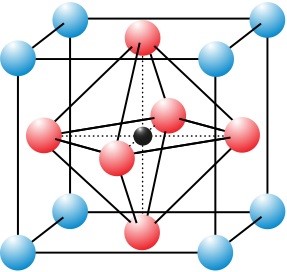What is a perovskite?
A perovskite is a material that has the same crystal structure as the mineral calcium titanium oxide, the first-discovered perovskite crystal. Generally, perovskite compounds have a chemical formula ABX3, where ‘A’ and ‘B’ represent cations and X is an anion that bonds to both. A large number of different elements can be combined together to form perovskite structures. Using this compositional flexibility, scientists can design perovskite crystals to have a wide variety of physical, optical, and electrical characteristics. Perovskite crystals are found today in ultrasound machines, memory chips, and now – solar cells.

Clean energy applications of perovskites
All photovoltaic solar cells rely on semiconductors — materials in the middle ground between electrical insulators such as glass and metallic conductors such as copper — to turn the energy from light into electricity. Light from the sun excites electrons in the semiconductor material, which flow into conducting electrodes and produce electric current.
Silicon has been the primary semiconductor material used in solar cells since the 1950s, as its semiconducting properties align well with the spectrum of the sun’s rays and it is relatively abundant and stable. However, the large silicon crystals used in conventional solar panels require an expensive, multi-step manufacturing process that utilizes a lot of energy. In the search for an alternative, scientists have harnessed the tunability of perovskites to create semiconductors with similar properties to silicon. Perovskite solar cells can be manufactured using simple, additive deposition techniques, like printing, for a fraction of the cost and energy. Because of the compositional flexibility of perovskites, they can also be tuned to ideally match the sun’s spectrum.
In 2012, researchers first discovered how to make a stable, thin-film perovskite solar cell with light photon-to-electron conversion efficiencies over 10%, using lead halide perovskites as the light-absorbing layer. Since then, the sunlight-to-electrical-power conversion efficiency of perovskite solar cells has skyrocketed, with the laboratory record standing at 25.2%. Researchers are also combining perovskite solar cells with conventional silicon solar cells – record efficiencies for these “perovskite on silicon” tandem cells are currently 29.1% (surpassing the record of 27% for conventional silicon cells) and rising rapidly. With this rapid surge in cell efficiency, perovskite solar cells and perovskite tandem solar cells may soon become cheap, highly efficient alternatives to conventional silicon solar cells.
